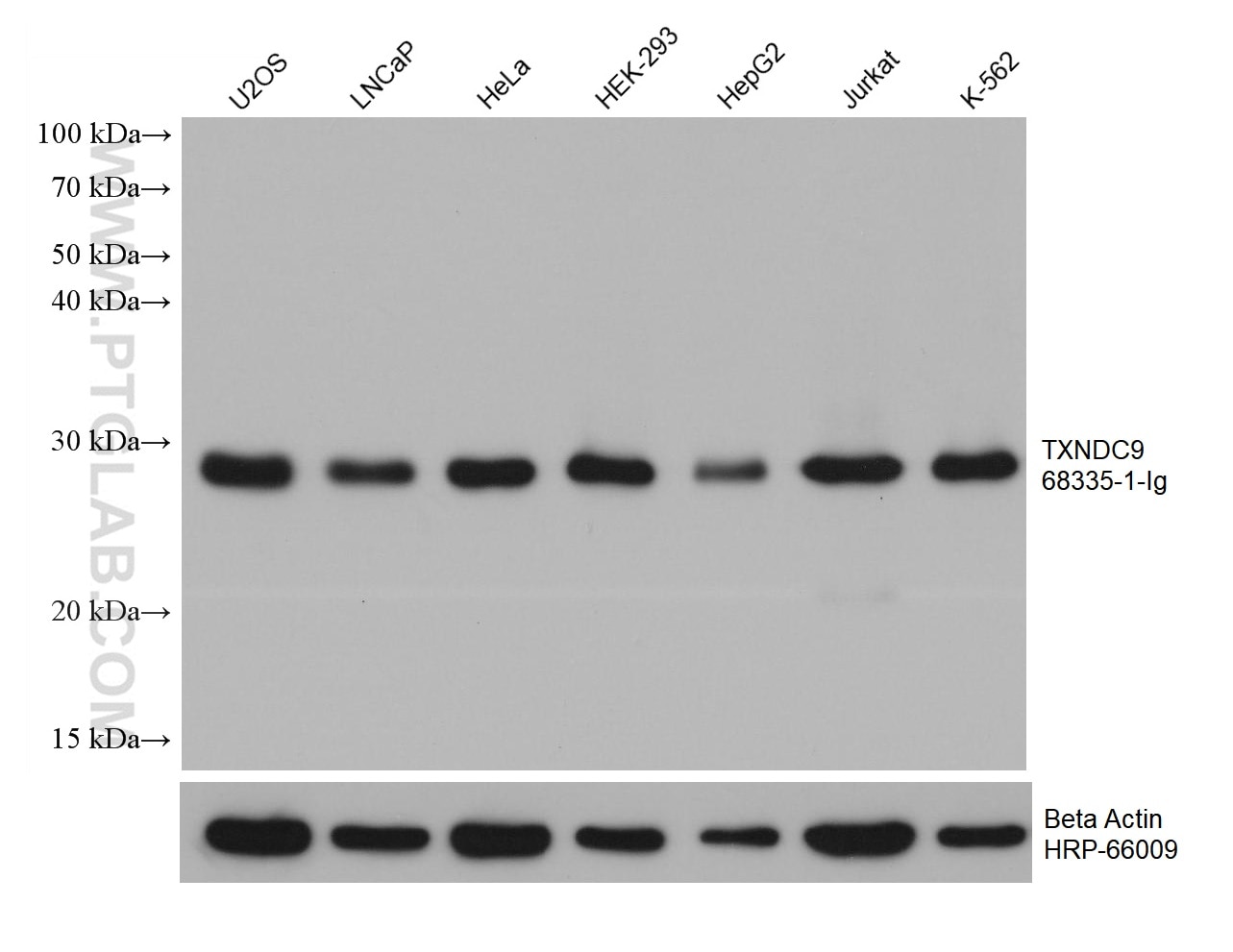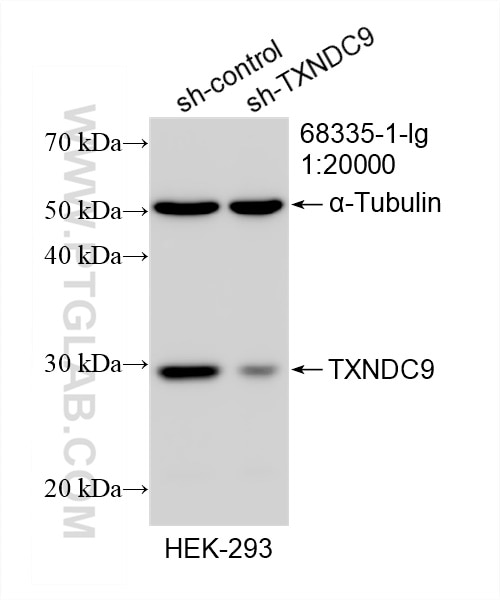Tested Applications
| Positive WB detected in | U2OS cells, HEK-293 cells, LNCaP cells, HeLa cells, HepG2 cells, Jurkat cells, K-562 cells |
| Positive FC (Intra) detected in | HEK-293 cells |
Recommended dilution
| Application | Dilution |
|---|---|
| Western Blot (WB) | WB : 1:5000-1:50000 |
| Flow Cytometry (FC) (INTRA) | FC (INTRA) : 0.80 ug per 10^6 cells in a 100 µl suspension |
| It is recommended that this reagent should be titrated in each testing system to obtain optimal results. | |
| Sample-dependent, Check data in validation data gallery. | |
Product Information
68335-1-Ig targets TXNDC9 in WB, FC (Intra), ELISA applications and shows reactivity with human, mouse samples.
| Tested Reactivity | human, mouse |
| Host / Isotype | Mouse / IgG1 |
| Class | Monoclonal |
| Type | Antibody |
| Immunogen | TXNDC9 fusion protein Ag33259 Predict reactive species |
| Full Name | thioredoxin domain containing 9 |
| Calculated Molecular Weight | 226 aa, 27 kDa |
| Observed Molecular Weight | 27 kDa |
| GenBank Accession Number | BC005968 |
| Gene Symbol | TXNDC9 |
| Gene ID (NCBI) | 10190 |
| RRID | AB_3085059 |
| Conjugate | Unconjugated |
| Form | Liquid |
| Purification Method | Protein G purification |
| UNIPROT ID | O14530 |
| Storage Buffer | PBS with 0.02% sodium azide and 50% glycerol, pH 7.3. |
| Storage Conditions | Store at -20°C. Stable for one year after shipment. Aliquoting is unnecessary for -20oC storage. 20ul sizes contain 0.1% BSA. |
Background Information
TXNDC9, also known as APACD, has a negative effect on protein folding by significantly reducing the activity of chaperone protein TCP1 complex ATPase activity. Including actin or tubulin.
Protocols
| Product Specific Protocols | |
|---|---|
| WB protocol for TXNDC9 antibody 68335-1-Ig | Download protocol |
| FC protocol for TXNDC9 antibody 68335-1-Ig | Download protocol |
| Standard Protocols | |
|---|---|
| Click here to view our Standard Protocols |







